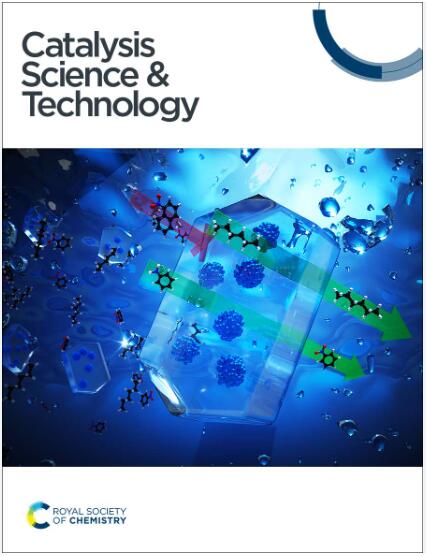Highly active heterogeneous Fe-based catalysts synergistically enhanced by polyaniline and MoS2 for organic contaminant elimination†
IF 4.2
3区 化学
Q2 CHEMISTRY, PHYSICAL
引用次数: 0
Abstract
Fe-based catalysts have garnered significant attention due to their high stability, low toxicity and cost-effectiveness, while the construction of highly active heterogeneous Fe-based catalysts through a simple method is still challenging in the environmental catalysis field. Herein, employing the synergistic enhancement effect of the conductive polymer polyaniline (PANI) and co-catalyst MoS2, a highly active PANI-supported Fe-doped MoS2 catalyst (PANI-Fe@MoS2) was prepared via a facile one-step hydrothermal process. Surprisingly, PANI incorporation induced critical structural modifications, including reduced average particle size (1 μm), expanded interlayer spacing (1.09 nm), and enhanced sulfur vacancy density. Interestingly, PANI-Fe@MoS2 achieved nearly 100% elimination of carbamazepine (CBZ) within 10 min, and its removal efficiency (k-value) surpassed most of those reported in the literature. Notably, PANI-Fe@MoS2 exhibited a high removal of TOC (nearly 50%), a wide pH operating range (2–10), and outstanding removal efficiency for various contaminants. Additionally, the quenching and electron paramagnetic resonance (EPR) experiments revealed that singlet oxygen (1O2) and hydroxyl radicals (˙OH) were the main reactive oxygen species (ROSs) for degrading CBZ. Moreover, the potential degradation pathways were proposed based on the intermediates of CBZ. This work provides a strategic paradigm for designing efficient heterogeneous Fe-based catalysts for environmental remediation.
聚苯胺和二硫化钼协同增强的高活性非均相铁基催化剂用于有机污染物去除†
铁基催化剂因其高稳定性、低毒性和低成本而备受关注,但在环境催化领域,通过简单的方法构建高活性的非均相铁基催化剂仍是一个挑战。本文利用导电聚合物聚苯胺(PANI)与助催化剂MoS2的协同增强效应,通过简单的一步水热法制备了具有高活性的聚苯胺负载的掺铁MoS2催化剂(PANI-Fe@MoS2)。令人惊讶的是,聚苯胺的掺入引起了关键的结构改变,包括平均粒径减小(1 μm),层间间距扩大(1.09 nm),硫空位密度增强。有趣的是,PANI-Fe@MoS2在10分钟内几乎100%消除了卡马西平(CBZ),其去除效率(k值)超过了文献中报道的大多数。值得注意的是,PANI-Fe@MoS2对TOC的去除率高(接近50%),pH范围宽(2-10),对各种污染物的去除率都很高。此外,淬火和电子顺磁共振(EPR)实验表明,单线态氧(1O2)和羟基自由基(˙OH)是降解CBZ的主要活性氧(ROSs)。此外,还提出了基于CBZ中间体的潜在降解途径。这项工作为设计高效的非均相铁基环境修复催化剂提供了一个战略范例。
本文章由计算机程序翻译,如有差异,请以英文原文为准。
求助全文
约1分钟内获得全文
求助全文
来源期刊

Catalysis Science & Technology
CHEMISTRY, PHYSICAL-
CiteScore
8.70
自引率
6.00%
发文量
587
审稿时长
1.5 months
期刊介绍:
A multidisciplinary journal focusing on cutting edge research across all fundamental science and technological aspects of catalysis.
Editor-in-chief: Bert Weckhuysen
Impact factor: 5.0
Time to first decision (peer reviewed only): 31 days
 求助内容:
求助内容: 应助结果提醒方式:
应助结果提醒方式:


